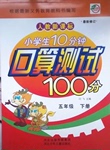题目内容
单句改错
下面每个句子都只有一处语言错误。每处错误仅涉及一个单词的增加、删除或修改。多改或不按格式要求改不得分。
增加:在缺词处加一个漏字符号(?),并在其下面写出该词。
删除:把多余的词用斜线(\)划掉。
修改:在错的词下面划一横线,并在该词下面写出修改后的词。
1.With time went by, I was made smaller.
2.Mary has d evoted herself to help the poor.
3.My parents always make me feel well about myself.
4.We are not sure when the universe was came into being.
5.Tom is in the charge of the company when the boss is away.
6.There is no doubt whether Zhu Zhiwen is a great farmer singer.
7.My name is Pausanias. I lived what you call “Ancient Greece”.
8.In recent years, a lot of traffic problems have arose in big cities.
9.Lots of soldiers have been sent to the forest in search for the mis sing kid.
10.The aging population in China will have a great affect on the whole society.
练习册系列答案
 小学生10分钟口算测试100分系列答案
小学生10分钟口算测试100分系列答案
相关题目


 not to have heard about
not to have heard about